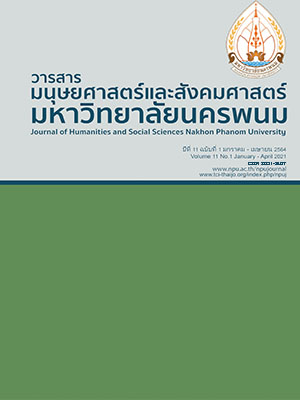Educational leader of ASEAN in the Next Decade (A.D.2017-2026)
Main Article Content
Abstract
The purposes of this research were to investigate characteristics of leaders of ASEAN education in the next decade (2017-2026) and to implement a training curriculum to prepare such leaders. An Ethnographic Delphi Future Research (EDFR) was used to guide the data collection and collected the data four countries. First, 20 experts were interviewed to determine initial characteristics. Second, they were asked to check the characteristics in the second round by using a five-Likert’s survey and confirmed again in the third round. The results were brought to focus group discussion with 7 specialists for confirmation and setting issues as well as training topics. The data analysis was conducted by using the content analysis, median, mode, and interquartile range. The results showed that the characteristics of leaders of ASEAN consist of five aspects as follows: vision, knowledge, management skills, morals and ethics, and relationship. The implementation of the training curriculum received positive satisfaction in the high level. When considering each item separately, all of them also received positive satisfaction in the high level.
Article Details
References
Dubrin, A. J. (1998). Leading: Research Finding, Practice, and Skill (2nded.). Boston: Houghton.
Fullan, M. (2001). Leading in a culture of change. San Francisco: Jossey-Bass.
Hallinger, J.S., & Murphy, S. L. (1985). Work stress and social support. Reading Massachusetts: Addison-Wesley.
Harold Koontz, Cyrill O’Donnell. (1976). Management: a systems and contingency analysis of managerial functions. New York: McGraw-Hill.
Hester, J.P. & Killian,D.R. (2011). The leader as moral agent: Praise, blame, and the artificial person. The Journal of Values Based Leadership, 4 (1), 93–104.
Katzenbach, J. R., & Smith, D. K. (1993). The wisdom of teams: Creating the high-performance organization.
Boston: Harvard business school.
Larson, C. E., & LaFasto, F. M. (1987). Team excellence Survey.When Team work best; 6000 team members and leaders tell what it takes to succeed. Thousand Oaks, CA; Sage. Larson. Newberry Park, CA: Saga.
Loke Heng Wang. (2010). Successful School Leadership in Singapore. Ph.D. Thesis, Melbourne Graduate School of Education, The University of Melbourne.
McShan, S.L. & Gilnow, M.A.Von. (2000). Organization Behavior. New York: McGraw-Hill.
Nolte, C. M. (1996). An introduction to school administration: Selected readings. New York: Macminllan.
Office of the Educational Council. (2557). kāndamnœ̄n ngān dān nayōbāi kānsưksā khō̜ng ʻongkō̜n nayōbāi kānsưksā radap chāt nai klum prathēt ʻĀsīan læ ʻĀsīan būak sām - wičhai prīapthīap. [Educational Policy Operation of National Policy.Organizations in ASEAN and ASEAN Plus Three: Comparative Research.] กรุงเทพฯ : Prigwhan Graphic Limited.
Office of the Basic Education Commission. (2554). kānphatthanā māttrathān læ yutthasāt nai kān phatthanā rōngrīan sū prachākhom ʻĀsīan sangkat kangā nakha na kamkānkān sưksākhan phư̄nthān. [Strategy and Standard Development for OBEC Schools to ASEAN Community] Bangkok : Office of the Basic Education Commission.
Poolpatarachewin, C. (2529). kānwičhai ʻanākhot. [Ethnographic Futures Research.] Journal of Research Methodology. 22 – 24.
Pamela Mendels. (2012). The Effective Principal, JSD Feature Leadership, 33(1), p. 54.
Stogdill, R. M. (1974). Handbook of Leadership. New York: The Free Press.
Thawirat, P. (2540). withīkān wičhai thāng phrưttikam sāt læ sangkhommasāt. [ Research methods in behavioral science and social sciences.] Bangkok: Bureau of Educational and Psychological Testing Srinakharinwirot University Prasarnmit


